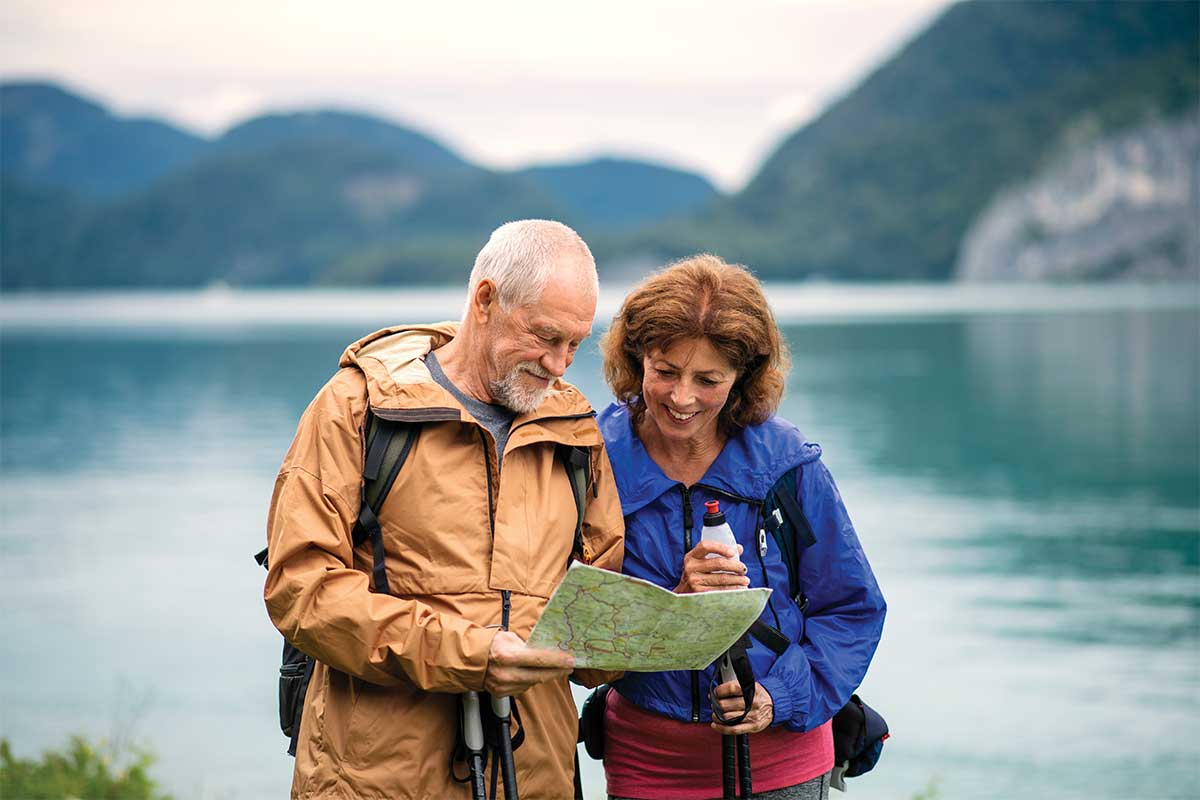Whether your bucket list is full of bustling foreign cities, grand museums, or stunning natural wonders, retirement can mean you finally have time to take on all of those destinations you’ve always dreamed about. As you get older, health concerns or mobility issues might make the thought of hopping on a plane or going on a hike seem daunting, but with a little preparation, it’s still possible to get out there and see everything you want to see. Here are some of the things you should think about before you pack your next suitcase so you stay safe and healthy on your big adventure.
Choose Your Destination Carefully
The first thing to do is to take a hard look at that bucket list and think about where you really want to go next. Do you want to have an adventurous trip to another country and see some of the great wonders of the world, or are you looking for a more relaxing beach getaway? Would you rather spend some time amid the great outdoors, or stroll around museums and galleries to get a taste of finer culture? You might need to think a little further into what you can manage than you did a few years ago, especially if you use a wheelchair or have trouble walking long distances.
“Every hotel and airline, as well as different destinations, have their own protocol for ADA compliance. Some meet the exact area of compliance that they need to meet; others go above and beyond. And there are a number of destinations that are actually focused on persons with disabilities and in doing the above and beyond,” said Patty David, the director of self and personal development at AARP.
AARP’s website has a travel page dedicated to advice on different destinations with seniors in mind.

Keep COVID in Mind
The process of traveling won’t be the same as it was before the pandemic, but that doesn’t mean it’s impossible to travel—it just means you need to consider some additional factors.
Kathleen Cameron, senior director at the National Coalition on Aging’s Center for Healthy Aging, says that vaccinations, wearing a mask, and being aware of the specific conditions at your destination can help you stay safe.
“Definitely, making sure [seniors] are up to date on their COVID-19 vaccines is going to be really important, including the primary series plus the booster, and, I think, understanding what the situation is where they’re going,” says Cameron. “They can find out through the CDC whether they’re going to a location that has a low, medium, or high risk level for the spread of COVID.”
Remember that most airlines will have different requirements for vaccine status or presenting a negative test result. Be sure to consider that when booking a trip, and don’t forget that there might be different requirements for your return trip compared to your departure.
Prioritize Your Health
To make sure your travel doesn’t compromise your health, some advance research comes in handy. Once you’ve decided where you’re going, start making sure you’re up-to-date on any vaccinations you might need, and that doesn’t just mean COVID—for many international destinations, it’s suggested that travelers get specific immunizations or take preventative medication to decrease their risk of getting sick abroad. The CDC has a resource available on its website where you can select your destination and find a list of recommended vaccinations or medications. It’s also worthwhile to book a visit with your general physician before doing any major traveling, so they can advise you on what’s best for your specific health needs.
Cameron advises that if you’re on any medications, you should keep information about what you’re taking, your diagnoses, and what dosage you need. This helps ensure that if something happens to them, you’ll have the information you need to get it replaced. And remember to always keep your medications with you—never in checked baggage.
“Never, ever pack your medications in a suitcase. I think we’ve all lost luggage at some point during our travels. Sometimes you get it back, but not all the time,” said Cameron.
Get There Safely
According to David, one of the most important things to think about is staying up-to-date with your airline and hotel in case of cancellations, delays, or other changes in plans. Having the app for your airline or hotel already loaded on your phone can keep you aware of anything you need to know.
Cameron also mentions that stretching your legs on a long flight is more important than you might know.
“One thing that I always recommend for flights two hours or more is to make sure you walk around some, because older adults are more at risk for developing deep-vein thrombosis, which is a blood clot in the veins,” she says. “It starts in the legs and it happens more when we’re immobile for long periods of time, and there may be certain conditions older adults have that put them at even greater risk.”
If you’re in need of accessibility accommodations like a wheelchair, calling ahead to your airline and hotel can be crucial. Speaking to someone directly will help you understand the specifics of their accommodations (Do they have loaner wheelchairs, if necessary? How will they help you onto the plane? Is the hotel shower wheelchair-accessible?) as well as help the facility prepare ahead of time so they have everything ready to go.

Seeing the Sights
Now comes the fun part: getting to explore! Similar to the rest of the process, the key here is to do your research ahead of time. At places like museums or historic sites, learning about the layout and approximate walking time can help you prepare. It’s always a good idea to wear sturdy shoes, and if you have trouble walking long distances, you can bring along a cane or other walking device.
When it comes to outdoor destinations like national parks, the same principles apply. Look into the difficulty levels of each trail to find the one that suits your needs best, and always be sure to stay hydrated and rest often to avoid overexertion. Happy traveling!
This story originally ran in our May issue. For more stories like this, subscribe to our monthly magazine.





